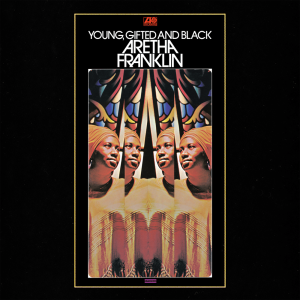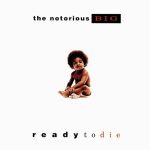
Category: Album
Title: Young, Gifted, and Black
Artist: Aretha Franklin
Released: January 24, 1972.
Album Background
Release Date and Label
Young, Gifted, and Black was released on January 24, 1972, by Atlantic Records. The album was a significant work during a time of social change and reflected Franklin’s deep connection to the civil rights movement and African American culture.
Artist Context
At this stage in her career, Aretha Franklin was already an established icon, often referred to as the “Queen of Soul.” The album was created during a period where Franklin was not only at the height of her commercial success but also deeply engaged in the cultural and social issues of the time. This album reflects her maturity as an artist and her willingness to address social themes through her music.
Concept and Inspiration
Themes and Messages
The album’s themes center on empowerment, love, pride, and resilience. It was heavily inspired by the civil rights movement and Franklin’s own experiences as an African American woman. Songs on the album reflect a sense of identity and strength, with a focus on both personal and collective experiences.
Inspiration
Franklin drew inspiration from the social and political climate of the early 1970s, particularly the struggles and triumphs of the African American community. The title track, “Young, Gifted, and Black,” was inspired by Nina Simone’s song of the same name and became an anthem for black empowerment.
Writing and Recording Process
Songwriting and Recording
- The album was recorded at multiple locations, including Criteria Studios in Miami, Florida, and Atlantic Studios in New York City. The songwriting process involved a mix of original compositions and covers, with Franklin contributing significantly to the album’s direction and themes.
- Notable tracks like “Rock Steady” and “Day Dreaming” were written by Franklin herself, showcasing her talent not just as a performer but also as a songwriter.
Notable Collaborations
The album features contributions from prominent musicians of the time, including Donny Hathaway, who played keyboards on several tracks, and Bernard Purdie, who provided drums. These collaborations helped to shape the album’s distinctive sound, blending soul, funk, and gospel influences.
Production Details
Producers and Sound
- Key Producers: The album was produced by Aretha Franklin, Arif Mardin, and Tom Dowd, who had been longtime collaborators with Franklin at Atlantic Records.
- Sound and Musical Style: Young, Gifted, and Black blends elements of soul, funk, gospel, and R&B, creating a sound that is both contemporary and timeless. The album’s production is characterized by rich, layered arrangements that complement Franklin’s powerful voice, while the inclusion of socially conscious lyrics adds depth to the music.
Track-by-Track Analysis
-
Track Listing:
-
- “Oh Me Oh My (I’m a Fool for You Baby)”
- “Day Dreaming”
- “Rock Steady”
- “Young, Gifted and Black”
- “All the King’s Horses”
- “A Brand New Me”
- “April Fools”
- “I’ve Been Loving You Too Long”
- “First Snow in Kokomo”
- “The Long and Winding Road”
- “Didn’t I (Blow Your Mind This Time)”
- “Border Song (Holy Moses)”
-
Key Tracks:
-
- “Young, Gifted and Black”: This empowering title track is a cover of Nina Simone’s original song and serves as an anthem celebrating black pride and resilience. Aretha Franklin’s soulful rendition adds a profound depth and sincerity, highlighting her vocal prowess and emotional delivery. The song encapsulates the spirit of the album, promoting messages of self-love and cultural pride during a pivotal time in American history.
- “Rock Steady”: Written by Aretha Franklin herself, this upbeat and funky track became one of her signature songs. “Rock Steady” showcases a groovy rhythm section and tight horn arrangements, blending funk and soul seamlessly. Franklin’s dynamic vocals drive the song, making it a danceable and infectious hit that displays her versatility and innovative approach to music.
- “Day Dreaming”: Another original composition by Franklin, this smooth and melodic track features dreamy arrangements and heartfelt lyrics about longing and romantic fantasy. The song’s gentle groove is complemented by Donny Hathaway’s electric piano and Hubert Laws’ flute, creating a lush soundscape that underscores Franklin’s tender and expressive vocal performance. “Day Dreaming” became a major hit and remains a beloved classic in her repertoire.
- “Oh Me Oh My (I’m a Fool for You Baby)”: Originally written and performed by Lulu, Franklin’s soulful interpretation brings new life to this romantic ballad. Her emotive delivery and the song’s rich orchestration convey deep feelings of love and vulnerability, demonstrating her ability to transform and own songs across different genres and styles.
- “All the King’s Horses”: This introspective song, penned by Franklin, delves into themes of heartbreak and resilience. The poignant lyrics and soulful melody are enhanced by gospel-influenced backing vocals and a powerful arrangement that highlights Franklin’s emotional depth and storytelling capabilities.
- “Border Song (Holy Moses)”: A cover of Elton John and Bernie Taupin’s composition, Franklin infuses the song with gospel fervor and soulful intensity. Her version emphasizes themes of unity and spiritual salvation, reinforced by robust vocal harmonies and stirring instrumental support. The track exemplifies her talent for reinterpreting and elevating existing songs through her unique artistic lens.
Awards and Nominations
Awards and Nominations
Young, Gifted, and Black earned Aretha Franklin a Grammy Award for Best Female R&B Vocal Performance in 1972, marking her fifth consecutive win in this category.
The album also received widespread critical acclaim for its production, songwriting, and Franklin’s exceptional vocal performances, solidifying her status as a leading artist of her time.
Sales and Charts
The album performed well commercially, reaching No. 2 on the Billboard R&B Albums chart and No. 11 on the Billboard 200.
Several singles from the album were also successful:
- “Rock Steady” peaked at No. 2 on the Billboard R&B Singles chart and No. 9 on the Billboard Hot 100.
- “Day Dreaming” reached No. 1 on the Billboard R&B Singles chart and No. 5 on the Billboard Hot 100.
- “Border Song (Holy Moses)” also charted, showcasing the album’s broad appeal and enduring impact.
Impact and Legacy
Influence and Long-term Impact
Young, Gifted, and Black is celebrated as one of Aretha Franklin’s most significant and influential works. The album’s fusion of social consciousness with exceptional musicality resonated deeply during the era of its release and continues to inspire artists across various genres.
The album’s exploration of themes related to black identity and empowerment contributed to the cultural dialogue of the time, reinforcing music’s role as a vehicle for social change and expression.
Franklin’s original compositions on the album showcased her talents beyond singing, highlighting her skills as a songwriter and solidifying her artistic legacy.
The album has been praised for its production quality and sophisticated arrangements, influencing the development of soul and R&B music in subsequent decades.
In recognition of its cultural and historical significance, the album has been included in various “greatest albums” lists and continues to be studied and appreciated for its artistic excellence.
Conclusion
Summary
Young, Gifted, and Black stands as a powerful testament to Aretha Franklin’s artistry and her deep connection to the cultural and social currents of her time. The album seamlessly blends soulful melodies with meaningful and empowering messages, delivered through Franklin’s unmatched vocal talent and expressive depth.
Final Thoughts
The album not only reinforced Franklin’s title as the “Queen of Soul” but also showcased her commitment to using her platform to address important social issues and uplift her community. Decades later, Young, Gifted, and Black remains a profound and inspiring work that continues to influence and move listeners around the world, underscoring the timelessness and universality of Franklin’s music.


















Leave a Reply